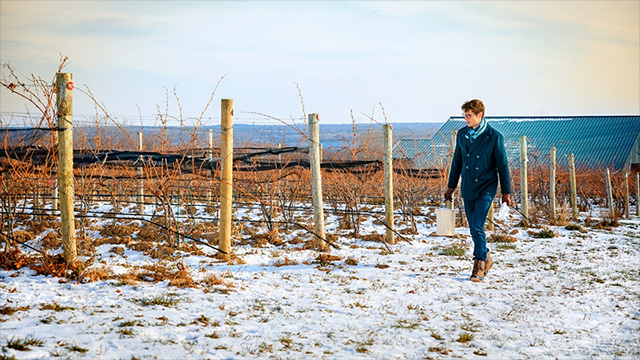
Months before northern vineyards burst into their lush summer peak, the delicate grape buds holding the nascent fruit in its tiny core must first withstand the freezing onslaught of winter.
Understanding how grape buds respond to subzero temperatures is of paramount concern to vineyard managers in New York and other northerly grape-producing states. Some of the more popular varieties used in the wine and juice industries can survive temperatures far below the freezing point of water. By a process known as supercooling, cellular mechanisms within the bud maintain water in liquid state down to around minus 4 to minus 30 degrees Fahrenheit, depending on the species. Beyond a certain low-temperature threshold, ice forms inside the cells, cellular functions cease and the bud dies.
Horticulturists have long relied on traditional methods to study freezing in plants. Now a researcher in the College of Agriculture and Life Sciences is using powerful technologies on campus to explore in new ways the cellular mechanics that allow grape buds to survive brutal cold. The research has implications for vineyard economics, especially as climate change opens more northerly land for cultivation and current growing regions experience more extreme weather.
Al Kovaleski, a doctoral student in the field of horticulture, is using the Cornell High Energy Synchrotron Source (CHESS) to create 3-D images of grape buds. The images produced at CHESS are providing a unique perspective as Kovaleski unravels the genetic underpinnings of supercooling in grape buds.


